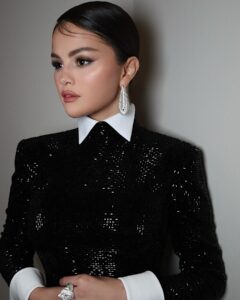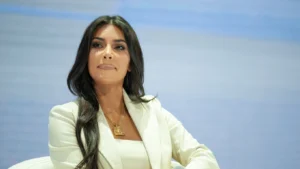
The James Bond film series is one of the most renowned and influential franchises in cinematic history.
Since its inception in the early 1960s, the series has captivated audiences worldwide through its thrilling action sequences, sophisticated charm, and iconic characters.
This blog post explores the evolution of James Bond, the cultural impact of the franchise, and its future, while maintaining a balance of critical analysis and entertainment value.
The Origins of James Bond
Ian Fleming’s Creation
The character of James Bond was created by British author Ian Fleming, who introduced him in 1953 with the novel Casino Royale.
Bond is portrayed as a British Secret Service agent with the code number 007, known for his suave demeanor and exceptional skills in espionage.
Fleming’s novels laid the groundwork for an iconic character who would go on to become a cultural phenomenon.
The First Cinematic Adaptation
The first film adaptation of a Bond story was a 1954 television production of Casino Royale, starring Barry Nelson.
However, this version was not officially part of the film series we recognize today.
The true beginning of the James Bond film franchise occurred in 1962, with the release of Dr. No. Produced by EON Productions, this film featured Sean Connery as Bond and established many of the trademarks that would define the series, including exotic locations, stylish cars, and memorable villains.
The Sean Connery Era (1962-1971)
Establishing the Template
Sean Connery’s portrayal of James Bond set a high standard for all future actors.
With his rugged charm and charisma, Connery defined the character in a way that audiences loved.
The early films included notable entries like From Russia with Love and Goldfinger.
These films combined action, wit, and a sense of adventure, establishing many bonds of the spy genre that would be emulated by countless films that followed.
Iconic Villains and Style
The Bond franchise also introduced memorable villains, such as Ernst Stavro Blofeld and Dr. No, alongside iconic characters like M and Q, who provided Bond with gadgets and support.
The visual style of the films, often showcasing lush landscapes and sophisticated settings, became trademarks of the series.
The Camp Era (1970s)
Roger Moore Takes Over
In 1973, Roger Moore took over the role of Bond with his debut in Live and Let Die.
Moore’s portrayal brought a lighter, more humorous tone to the franchise, reflecting the cultural shifts of the 1970s.
The films of this era were marked by an increase in elaborate plots and spectacular stunts, often venturing into campy territory.
Notable Entries
The 1970s Bond films included titles such as The Spy Who Loved Me and Moonraker, which featured increasingly outrageous gadgets and outlandish scenarios.
While some fans appreciated the humor and creativity, others felt this era strayed too far from the original tone set by Connery.
The 1980s and 1990s
A Return to Seriousness with Timothy Dalton
Timothy Dalton’s tenure as Bond in the late 1980s marked a shift toward a more serious and gritty portrayal in The Living Daylights and Licence to Kill.
Dalton’s Bond was more vulnerable and complex, aligning more closely with Fleming’s original character.
This change resonated with audiences seeking deeper narratives and character development.
Continued Popularity Amidst Competition
Despite facing stiff competition from other action franchises, the Bond series remained popular.
The 1990s brought a resurgence in interest, largely thanks to the success of the previous films and the establishment of a devoted fanbase.
Revitalization in the 2000s
Pierce Brosnan’s Rise
The series saw a revitalization in the mid-1990s with Pierce Brosnan, who debuted as Bond in GoldenEye (1995).
Brosnan’s portrayal combined charm with a modern perspective, revitalizing the franchise for a new generation.
His films, including Tomorrow Never Dies and Die Another Day, brought impressive special effects and intricate plots, successfully appealing to both old and new fans.
Temporary Hiatus
After Die Another Day (2002), the franchise went on a temporary hiatus due to legal battles and a desire for a creative refresh.
Fans awaited news of the next installment, eager to see how the series would evolve once again.
The Daniel Craig Era (2006-2021)
A Gritty Reboot
In 2006, the series was rebooted with Daniel Craig starring in Casino Royale.
This film presented a more grounded and gritty interpretation of Bond.
Craig’s portrayal focused on Bond’s emotional depth and vulnerability, marking a significant departure from previous interpretations.
The film garnered critical acclaim and reignited interest in the franchise, leading to the competitive success of subsequent films.
Exploring Complex Themes
Craig’s tenure continued with successful titles like Skyfall and Spectre, which explored themes of loyalty, betrayal, and the consequences of a life of espionage.
His films were not just action-packed but also provided deeper emotional narratives, showcasing Bond as a flawed hero.
Character Development and Diversity
The Craig era has also been noted for increased diversity and complex female characters.
The films began to reconsider traditional gender roles within the context of the series, providing stronger narratives for female characters, which reflected changing societal perspectives.
No Time to Die (2021) – A Final Farewell
Craig’s Last Adventure
Daniel Craig’s final outing as Bond came with No Time to Die, released in 2021.
The film delved into themes of legacy and identity, exploring the impact of Bond’s tumultuous life on those around him.
It presented a more personal story while maintaining the thrilling action and high stakes that fans expect from a Bond film.
Impacts on the Franchise
“No Time to Die” performed exceptionally well at the box office, grossing approximately $774 million global despite the challenges posed by the COVID-19 pandemic.
The film was lauded for its ambitious storytelling and an emotional farewell to Craig’s portrayal of the beloved character.
The Future of the James Bond Franchise
Post-Craig Transition
With Craig’s departure, speculation swirls regarding who will take on the iconic role of Bond next.
Directors and producers, including Barbara Broccoli, are considering how to adapt the series for future generations, while balancing the legacy of the character with contemporary sensibilities.
Questions arise about how the next Bond will be presented and the direction the franchise will take.
Expanding the Universe
Additionally, plans for the future of the franchise may include spin-offs and series that delve into different aspects of the Bond universe.
This reflects a growing trend in cinema toward expansive storytelling, allowing for deeper exploration of supporting characters and narratives.
Cultural Impact of the James Bond Franchise
Influence on Popular Culture
The James Bond franchise has had a significant and lasting impact on popular culture, influencing countless action films, TV shows, and various media contents.
Its iconic elements, including the poignant Bond theme, gadgets, and villain archetypes, have all become staples associated with the spy genre.
The character of James Bond himself has become a symbol of sophistication and adventure.
Legacy of the Franchise
As one of the longest-running and most successful film series in cinema history, the Bond franchise enjoys a loyal fanbase that spans multiple generations.
The series has continuously adapted to changing cultural landscapes while retaining the original spirit and elements that make it beloved by fans worldwide
The Evolution of Female Characters in the James Bond Franchise
The James Bond franchise has fascinated audiences for over half a century, celebrated for its thrilling action, stunning locations, and charismatic lead.
However, one aspect that has evolved significantly over the years is the portrayal of female characters.
Initially relegated to the roles of love interests or “Bond girls,” women in Bond films have increasingly been depicted as complex, strong, and integral to the narrative.
This blog post explores this evolution, examining key films and characters that illustrate how the representation of women has shifted within the franchise.
The Early Portrayals: Bond Girls vs. Empowered Women
The Iconic Bond Girl
When Dr. No was released in 1962, the concept of the “Bond girl” emerged, representing a blend of beauty, allure, and a touch of danger.
Characters like Honey Ryder, played by Ursula Andress, captured audience attention with their glamorous looks and captivating presence.
However, these women often lacked depth, serving primarily as romantic interests for James Bond.
The Formulaic Approach
The early films frequently presented women in formulaic roles: attractive, seductively charming, and often in need of rescue.
While some characters occasionally exhibited strength or intelligence, they were usually overshadowed by Bond’s dominance. For example:
- Pussy Galore in Goldfinger (1964) showcased both strength and independence but ultimately fell into the archetype of a Bond girl who needed to be seduced and ultimately saved.
- In From Russia with Love (1963), Tatiana Romanova, played by Daniela Bianchi, was a Russian agent, yet her characterization still pivoted around her romance with Bond.
This portrayal reflected the societal norms of the time, where female characters were often defined by their relationships with men.
Shifts in Representation: Turning Points in the Franchise
The 1980s and 1990s: A Glimpse of Change
As the franchise progressed into the 1980s and 1990s, there were glimpses of change regarding female representation, particularly with Tina Dalton‘s character in Licence to Kill (1989).
Although still a love interest, she was portrayed as resourceful, showcasing a more active role compared to her predecessors.
The Brosnan Era: Stronger Female Characters
The arrival of Pierce Brosnan as Bond in the mid-1990s marked another turning point.
Films like GoldenEye (1995) introduced Xenia Onatopp, played by Famke Janssen, a villain who was both seductive and lethal.
While still fitting the “Bond girl” mold, Xenia’s character demonstrated significant agency and power, contrasting sharply with earlier depictions.
- Additionally, Natalya Simonova in GoldenEye was portrayed as a competent computer programmer, showcasing intelligence and adaptability rather than merely being a romantic subplot.
Progression into Complexity
During the Brosnan era, female characters began to take on roles that were more than just love interests.
For instance, Judy Dench was introduced as M, marking a critical milestone. Transitioning M from male to female not only redefined the character’s authority in the franchise but also symbolized a shift toward the inclusion of women in pivotal roles.
This was a significant transformation, indicating that women could possess authority within the Bond universe without being merely accessories to the male protagonist.
The Craig Era: Redefining Female Characters
A New Wave of Representation
Daniel Craig’s arrival as Bond in 2006 signaled a fresh approach to both Bond himself and the women featured alongside him.
Casino Royale introduced Vesper Lynd, brilliantly portrayed by Eva Green.
Vesper was a complex character motivated by personal dilemmas and her own agency, creating emotional depth and a meaningful connection to Bond.
- Vesper’s arc is marked by betrayal and vulnerability, showcasing that female characters could profoundly impact the story’s direction and Bond’s character development.
Strong Female Allies
As the Craig films progressed, the portrayal of women continued to evolve.
In Skyfall (2012), the character of Eve, played by Naomie Harris, was not only a field agent but also one of Bond’s key allies.
The film showcased Eve as competent, skilled, and essential to the mission, moving beyond the stereotype of the traditional Bond girl.
- Additionally, M, portrayed by Dench until Skyfall, continued to command respect and authority within the series.
The dynamic between Bond and M became more nuanced, with M frequently challenging Bond’s actions, reflecting a more egalitarian relationship.
Recent Developments: A Focus on Representation and Diversity
No Time to Die: A Transformative Legacy
In No Time to Die (2021), the legacy of female representation took another step forward.
The film featured Nomi, played by Lashana Lynch, as the new 007 agent. Nomi’s portrayal as a strong, capable, and independent character was not simply a “Bond girl” but an essential part of the narrative.
Her dynamic with Bond was marked by respect and equality, breaking away from traditional gender norms that have historically connected women to a subordinate narrative.
- This marks an important milestone in representation within the franchise, indicating a progressive future where women hold significant roles in storytelling without relegation to mere romantic interests.
The Future of Women in Bond Films
Continuing the Conversation
As society continues to evolve, so does the need for diverse and multi-dimensional portrayals of women in film.
The James Bond franchise, having laid the groundwork for more empowered narratives, promises to reflect these changes in future installments.
A Call for Authentic Representation
Going forward, there is an opportunity for the franchise to further explore authentic narratives featuring women.
This could include stories that delve deeper into female characters’ backgrounds, motivations, and experiences without relying solely on their connections to male characters.
Conclusion
The portrayal of female characters in the James Bond franchise has transformed dramatically from its inception to the present day.
While early films featured women largely as secondary characters defined by their relationships with men, recent portrayals have embraced complexity, strength, and independence.
As the Bond universe continues to adapt and evolve, the representation of women stands to significantly impact the narrative landscape, providing audiences with a richer and more diverse cinematic experience.



















